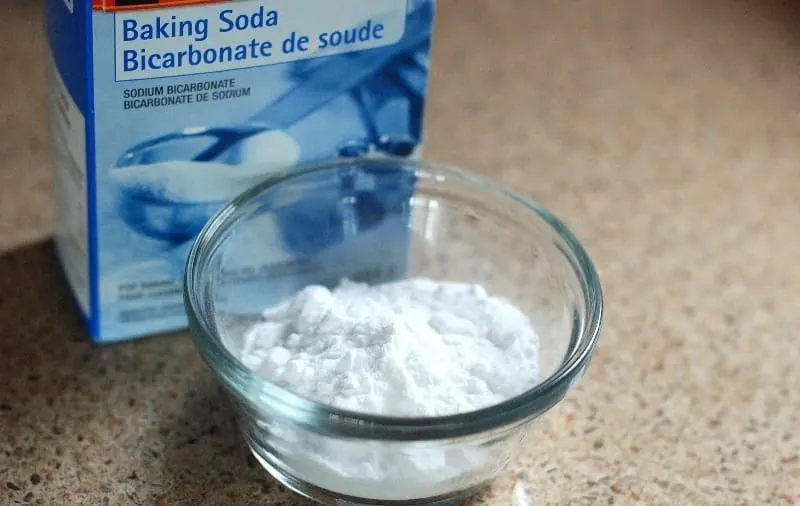There are plenty of baked goods that use yeast and many more that use baking powder. Both of these are leavening agents and act to rise baked goods with carbon dioxide, so what happens if you mix them?
Baking powder has little to no effect on yeast, so it will not kill it. It does contain some salt, but not enough to have a noticeable effect on the yeast. When it comes to combining them in a recipe, there’s no reason to do so since the yeast is effective without baking powder.
Yeast is only really ‘killed’ in high salt or sugar environments. Both salt and sugar will steal the water from yeast cells, damaging them and preventing the dough rise you want.
Baking powder does have its applications, but it’s not used in the majority of bread recipes for a good reason.
Why Is Yeast Used Instead Of Baking Powder In Bread?
Yeast is the only leavening agent in many bread recipes since it does such a good job at it. Whilst yeast is great, there are also other leavening agents used in many baked goods, such as baking powder, so why not use baking powder for rising bread? Well, there’s a good reason for that.
For yeast to efficiently raise bread, there needs to be a gluten network that’s strong enough to contain the gas given off by the yeast. This gluten network in conjunction with the yeast is what allows the dough to slowly rise.
The gluten network is developed through kneading and strengthened further during a slow yeasted rise. The gas gradually stretches the gluten in the dough to create alveoli (pockets of carbon dioxide) and creates a better structure.
The slow gas production allows for the gentle expansion of the alveoli in the dough. If the gas production was too fast, there’s a risk that the gluten becomes damaged and either collapses or forms large and uneven holes.
Baking powder is a leavening agent that can produce gas too quickly and therefore damage the gluten network.
You’ll find that baking powder is used in cake and muffin recipes as this fast gas production is needed since you don’t want gluten to develop.
In softer baked goods like cakes, chemical leavening is the go-to because it’s simply the best rising agent for the job. When recipes call for baking powder, it’s usually mixed into a batter and baked immediately so that the gluten does not start to develop and the baking powder can raise it appropriately.
This immediate baking after mixing is why baking powder is preferred over yeast in cake recipes. Yeast needs time to work, so baking powder is more effective in these faster recipes. As a result of this quick bake, you get a very soft and tender baked good without the chewy texture you’d get with gluten.
Gluten gives bread its chewy texture, so yeast is ideal for it. You don’t want gluten in lighter and softer baked goods like cakes or they just wouldn’t be cakes.
Yeast in bread also develops a more fermented taste over time since it breaks down the molecules in the dough. This flavor becomes much more noticeable after being fermented in refrigerated for a few days.
On the other hand, the flavors from recipes that use baking powder, like cakes, come from certain extracts, fruits, etc., and don’t ferment for a long time so they don’t develop the same type of flavor as yeasted bread.
Can You Use Baking Powder In Bread?
Some bread recipes do call for baking powder. For example, a soda bread recipe may call for baking soda as well as baking powder.
There’s no point in putting baking powder in bread when you’re already using yeast since the yeast is highly effective at raising the bread as it is. When making bread without yeast, baking powder is an effective alternative since it also produces gas.
If you’re making bread that contains yeast, you won’t get much benefit from adding baking powder, so it’s needless.
Instead, you should use yeast alone and leave the baking powder for recipes that don’t include yeast.
What Happens When You Mix Yeast And Baking Powder In Bread?
If you want to combine yeast and baking powder in your bread for whatever reason, it’s a good idea that you get an understanding of how effective they are when combined in a dough so you can know whether it’s worth doing it or not.
Both yeast and baking powder are great for their individual purposes, but they’re not necessarily great when combined. If you did go ahead and mix yeast and baking powder you would get one of the following results:
- Adding the baking powder and yeast and baking within a short period of time may give you some rise, but it won’t work in the same way as yeast alone. The yeast will have virtually no positive effect on the bread since it hasn’t had enough time to do its work.
Yeast needs many hours to raise bread effectively during baking, so it’s not something you can rush with baking powder. You won’t get the same results anyway. - Adding the baking powder and yeast isn’t great even if you do allow it to rise correctly. Having a couple of long rises will leave you with bread, but the baking powder will have had virtually no effect on the finished product.
Since the baking powder will have been sitting in the dough for so long, it will become useless as it loses its ability to leaven after an extended amount of time in the dough.

